
The pear season is nearly upon us, so I thought it would be the perfect (or should I say ‘pear’fect) time to paint some lovely Conference pears.
I think the easiest way to recognise a Conference pear is by its elongated bottle-like shape and the distinctive brown patches (caused by moisture on the skin as it grows) known as ‘russets’. It’s actually these brown patches which give Conference pears their distinctive nutty flavour.
Did you know that the Conference pear is the most widely grown variety in the UK with over 15,000 tonnes produced in 2020 ~ that equates to 90% of the market! But have you ever wondered how this pear got its unusual name?
The answer lies back in the late 1800’s when this pear was first cultivated. Around this time, imported goods of fruits and vegetables from America were being delivered in such high volume that alarm bells began to ring for British fruit growers. This prompted them to decide that a single variety of pear must be selected for domestic production. After much research and debate, they finally agreed that the first prize winner at the Apple and Pear Conference of 1888 was the pear to go with. However, unable to come up with a name for the pear they settled on ‘Conference’ after the conference where the pear was selected!
For a more in-depth read all about the history of the Conference Pear take a look at the article published in Country Living magazine (where my abridged version was taken).
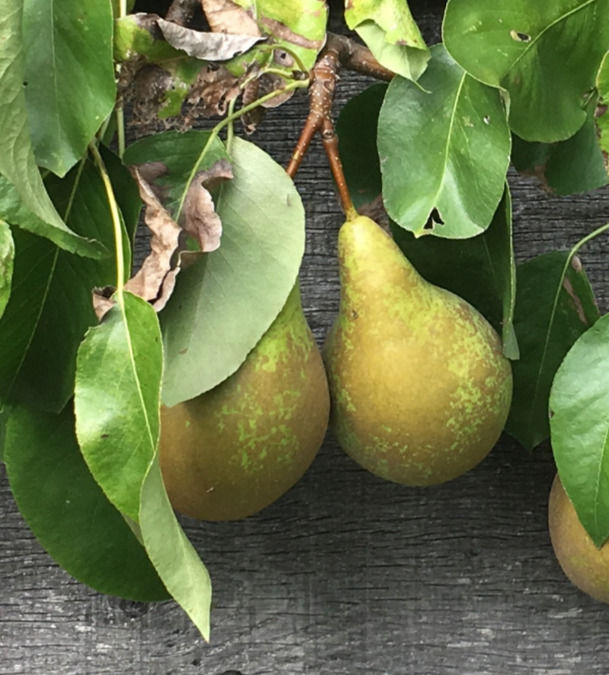
The Conference pears which we are painting are actually taken from a number of photographs I took a couple of years ago. As you might have already gathered, I’m always on the lookout for painting inspiration and images which can be used as future reference photos! I spied these ones growing against the cafe wall at Standen National Trust (West Sussex) and I was quite amazed at just how much fruit adorned the branches.
In this watercolour project we are going to work quite realistically ~ but we are not going to go as far as using the traditional methods of botanical painting (which requires a higher level of accuracy suited to scientific illustration).
For this tutorial I’m also going to encourage you to come up with your own composition where you can use one, two or more pears! So feel free to research your own photographs or perhaps pick a pear from your own tree if you’re lucky enough to have one in the garden!
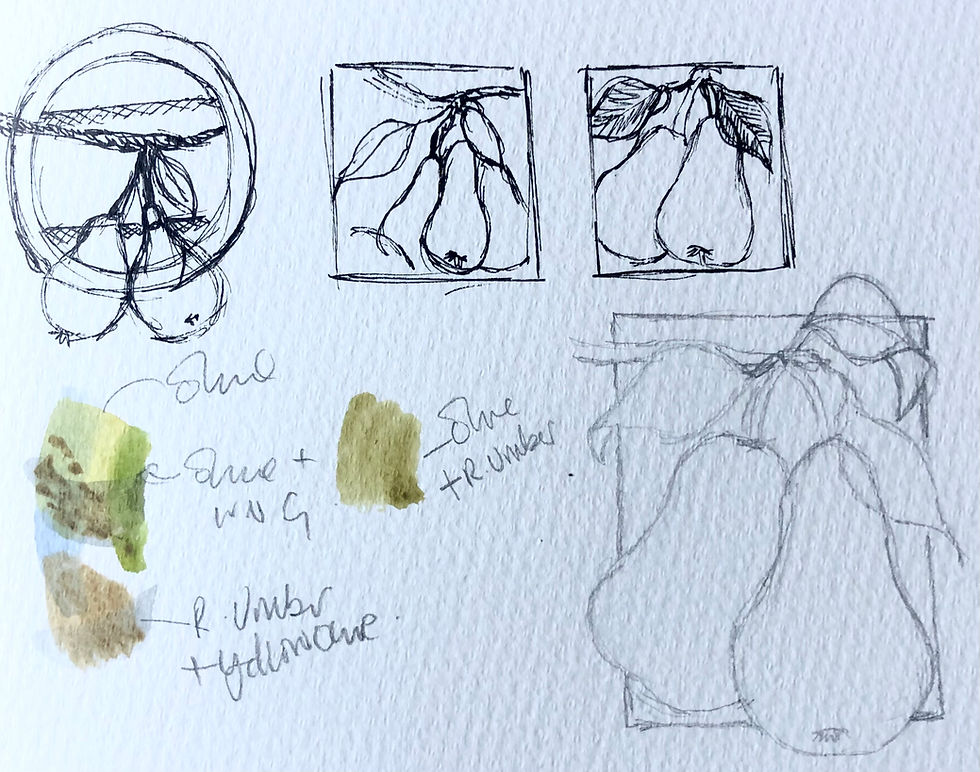
Once you have decided upon the scale and composition of your painting you might like to add a simple frame around the image or use it to dissect your fruit or leaves so you have some of your elements overlapping the edges. It’s a good idea to have a play around with your ideas before you begin, so you develop a layout which you are happy with. You can do this by making very simple sketches on a spare piece of paper.
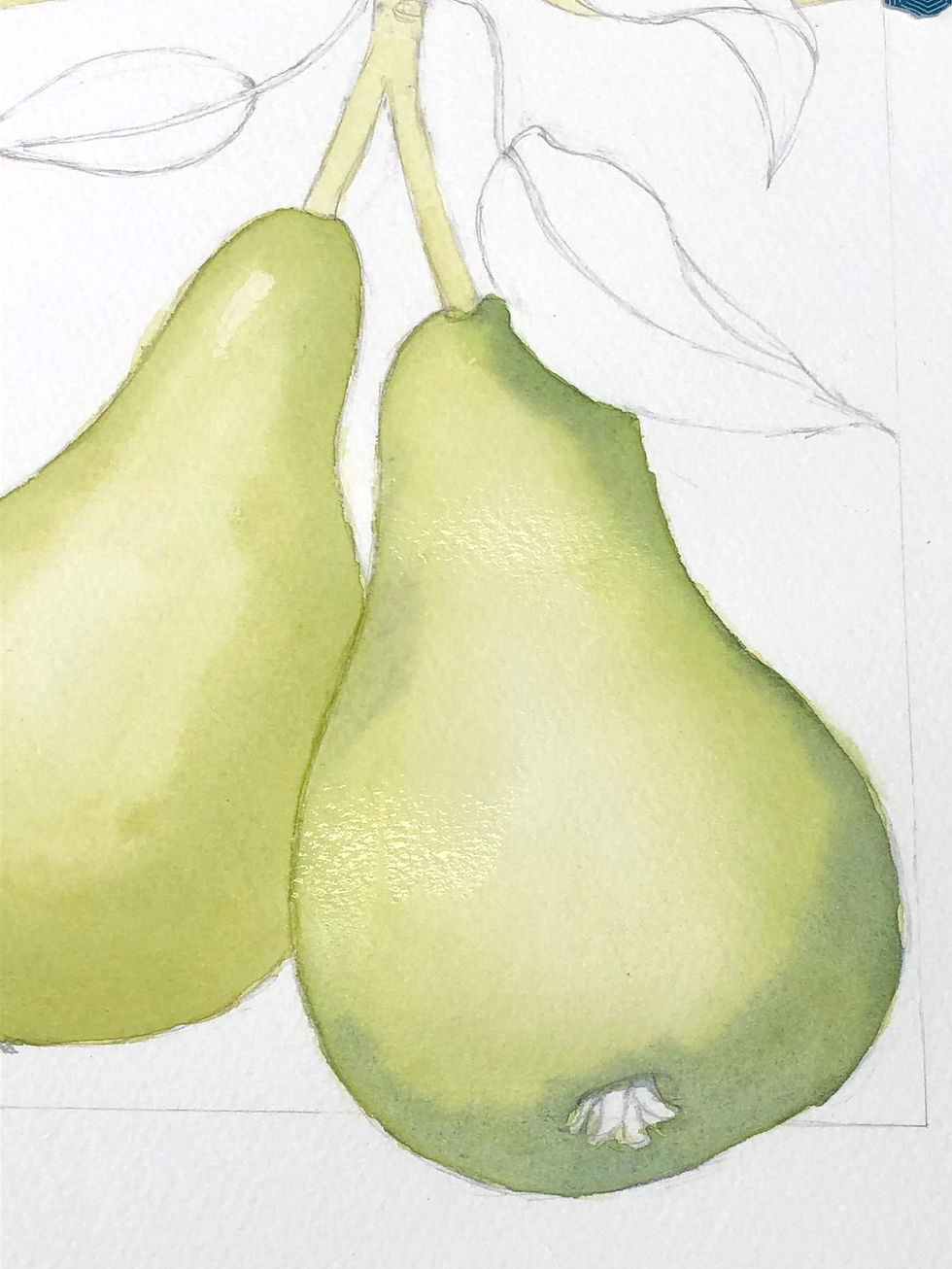
To begin, I will show you how to layer different values (light & darks) which will give your pear a sense of form (3D).
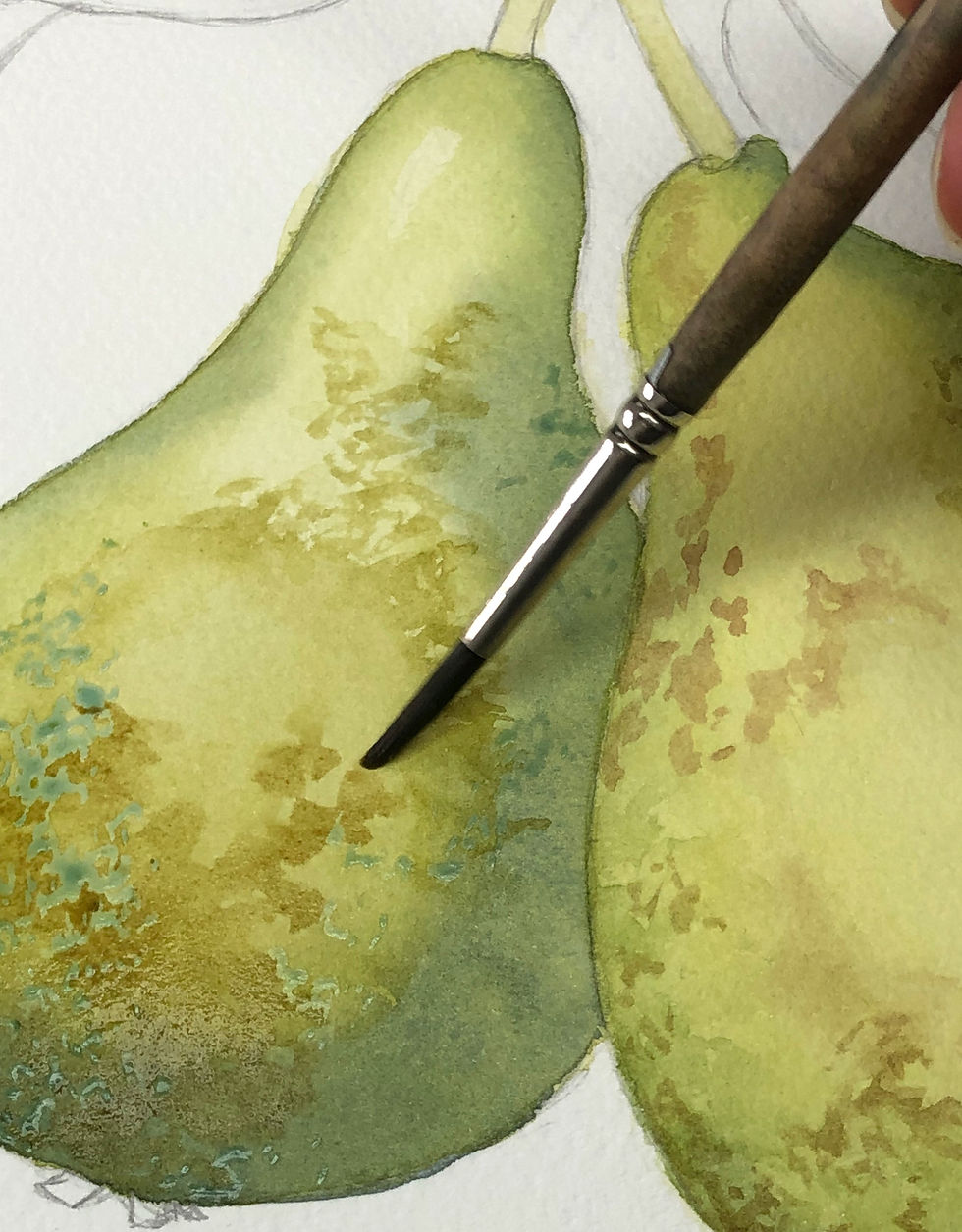
We will work onto dry to add the russets and use masking fluid to achieve smaller detailing.
Building up the mottled colour on the skin is the key to making these pears look realistic so we will spend time looking at how the colours change and fade as they cover the surface.
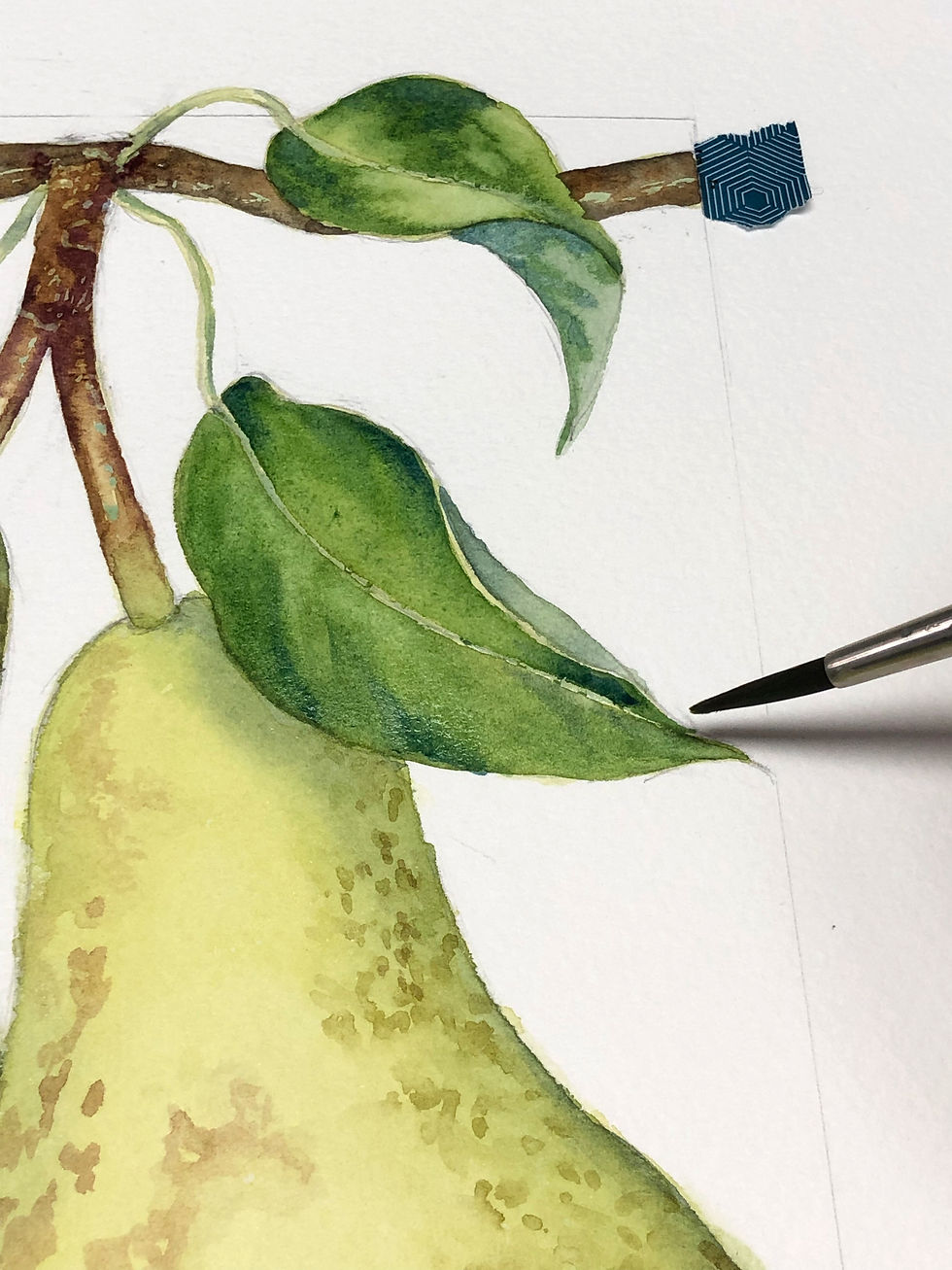
You can add as many or as few leaves as desired, just think about their size and scale and how they interact with the pear. The trick is to use leaves you can see in the photographs (rather than making them up) even if you intend to place them in a different position. This way you will have a leaf to refer to once you start to add colour and detail.
To complete the painting you can choose to add colour to the background or just add a simple colour outline to your frame (as I have). You can be as creative as you like with this element!

I hope you enjoy this one and do remember that, even if you just have time to practise the layering techniques this will help yout to get to grips with the strength of your paint and the amount of water on your paper as you work into wet ~ this will be an invaluable skill to master as it’s one of the key watercolour techniques which underpin many paintings.
To find out more about this project, take a look at the short video below.
Don't forget to share your finished paintings on the forum or if you would like to share any of your own photographs of pears (or other inspiration photo references) for other members to use you can add these onto the 'News & Views' section on the forum.
Happy Painting!
Comments